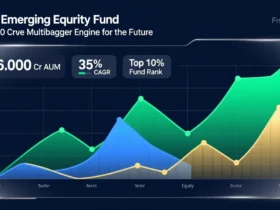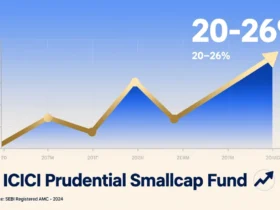Waking up every month to a steady ₹50,000 deposited into your bank account—without lifting a finger. Sounds like a dream, right? Well, it’s not just a fantasy; it’s a reality you can achieve with mutual funds and a clever tool called the Systematic Withdrawal Plan (SWP). If you’ve been searching for a way to generate passive income or secure your financial future, this blog post is your roadmap. We’ll dive deep into how you can earn ₹50,000 per month using a mutual fund SWP with just a 10% annual return. From calculations to fund selection, risks, and actionable steps, we’ve got you covered. Let’s unlock the secret to financial freedom!
Table of Contents
What Is a Systematic Withdrawal Plan (SWP)?
Before we crunch numbers and pick funds, let’s understand what an SWP is and why it’s a game-changer for income seekers. A Systematic Withdrawal Plan is a feature offered by mutual fund companies that lets you withdraw a fixed amount—like ₹50,000—regularly from your investment. Think of it as your personal ATM, dispensing cash monthly, quarterly, or however you set it up, while the rest of your money stays invested and grows.
How Does SWP Work?
When you opt for an SWP, you decide:
- How much to withdraw (e.g., ₹50,000/month).
- How often (monthly, quarterly, etc.).
- When to start.
Each withdrawal redeems a portion of your mutual fund units at the current Net Asset Value (NAV). The remaining units keep working for you, potentially earning returns. For instance, if you invest ₹60,00,000 and withdraw ₹50,000 monthly, the fund house sells just enough units to pay you, leaving the rest to grow.
Why Choose SWP Over Other Options?
Unlike lump-sum withdrawals that can drain your savings fast or dividend plans that depend on fund performance, SWP offers:
- Steady Income: Perfect for retirees or anyone needing regular cash flow.
- Tax Efficiency: In India, long-term capital gains (LTCG) from equity funds are taxed at 10% (above ₹1 lakh), often lower than interest income tax rates.
- Flexibility: Adjust or stop withdrawals anytime.
- Growth Potential: Your corpus isn’t fully cashed out—it keeps growing!
“SWP is like having your cake and eating it too. You get income today while your investment bakes for tomorrow.” – Priya Sharma, Financial Planner

How Much Do You Need to Invest?
Now, let’s get to the heart of it: How much money do you need to start an SWP that pays ₹50,000 per month with a 10% return? The answer hinges on a simple yet powerful financial concept—sustainability.
The Math Behind ₹50,000/Month
To withdraw ₹50,000 every month, you’ll need ₹6,00,000 annually (₹50,000 × 12). If your mutual fund portfolio earns a 10% annual return, we can calculate the required investment assuming the withdrawals match the returns, keeping your corpus intact (a perpetuity-like approach).
Here’s the formula:
Initial Investment = Annual Withdrawal ÷ Annual Return Rate
- Annual Withdrawal = ₹6,00,000
- Annual Return Rate = 10% (or 0.10)
Initial Investment = ₹6,00,000 ÷ 0.10 = ₹60,00,000
So, you need ₹60,00,000 to start. With this amount, a 10% return generates ₹6,00,000 yearly, matching your withdrawals.
Does This Hold Up?
Let’s test it:
- Year 1: Start with ₹60,00,000. A 10% return adds ₹6,00,000, making it ₹66,00,000. Withdraw ₹6,00,000 (₹50,000 × 12), and you’re back to ₹60,00,000.
- Year 2: Same cycle repeats.
In reality, withdrawals happen monthly, not yearly, so the corpus fluctuates slightly. A monthly return is roughly 0.833% (10% ÷ 12), but for simplicity, the annual approximation works closely enough. Over time, market ups and downs will affect this, but we’ll address that later.
Here’s a quick table to visualize:
| Year | Starting Corpus | 10% Return | Withdrawal | Ending Corpus |
|---|---|---|---|---|
| 1 | ₹60,00,000 | ₹6,00,000 | ₹6,00,000 | ₹60,00,000 |
| 2 | ₹60,00,000 | ₹6,00,000 | ₹6,00,000 | ₹60,00,000 |
| 3 | ₹60,00,000 | ₹6,00,000 | ₹6,00,000 | ₹60,00,000 |
This assumes a consistent 10% return—more on that in the risks section!
Picking the Right Mutual Funds
A 10% annual return isn’t guaranteed, but it’s achievable with the right funds. Let’s explore your options and how to choose wisely.
Types of Mutual Funds for 10% Returns
- Equity Funds:
- Invest in stocks, offering high returns (often 10-15% historically) but with higher risk.
- Example: Large-cap or multi-cap funds.
- Hybrid Funds:
- Mix equity and debt for balanced returns (8-12% average).
- Example: Aggressive hybrid funds.
- Debt Funds:
- Safer but typically yield 6-8%, below our target.
- Best for stability, not this goal.
For a 10% return, equity funds or aggressive hybrid funds are your best bet, depending on your risk appetite.
What to Look For
- Past Performance: Check 5-10 year returns. A fund averaging 10%+ is promising (though not a guarantee).
- Expense Ratio: Lower fees (e.g., 1% or less) mean more money stays invested.
- Fund Manager Expertise: A proven track record matters.
- Diversification: Spreads risk across sectors and companies.
“Equity funds can fuel your SWP, but diversify to sleep better at night.” – Rahul Mehra, Mutual Fund Expert
Top Fund Categories to Explore
- Large-Cap Funds: Stable giants like Reliance or HDFC.
- Mid-Cap Funds: Growth potential with moderate risk.
- Balanced Advantage Funds: Dynamic equity-debt mix.
Consult a financial advisor to match funds to your goals!
How to Set Up Your SWP
Ready to start? Setting up an SWP is easier than you think. Here’s your step-by-step guide:
- Select Your Fund: Pick a mutual fund based on research or advice.
- Invest ₹60,00,000: Lump sum or via SIPs until you reach the amount.
- Complete the SWP Form: Get it from your fund house or online platform.
- Specify Details:
- Amount: ₹50,000
- Frequency: Monthly
- Start Date: Choose what suits you
- Submit: Include KYC documents if needed.
- Monitor: Track performance via statements or apps.
Pro Tips
- Link a bank account for seamless withdrawals.
- Start SWP after some growth (e.g., 6-12 months) if markets are shaky.
- Check tax rules—LTCG applies to equity fund withdrawals.
Risks and How to Manage Them
Mutual funds aren’t fixed deposits. Returns vary, and risks lurk. Here’s what to watch out for and how to stay safe.
Key Risks
- Market Volatility: A bad year could shrink your corpus faster than planned.
- Inflation: ₹50,000 today won’t buy as much in 10 years.
- Longevity Risk: Outliving your money if withdrawals exceed sustainable levels.
Mitigation Strategies
- Diversify: Spread investments across equity, debt, and sectors.
- Buffer Fund: Keep 6-12 months of expenses in a liquid fund.
- Adjust Withdrawals: Cut back during downturns, increase in booms.
- Review Annually: Rebalance if returns stray from 10%.
Reality Check: A 10% return is an average, not a promise. Equity funds might hit 15% one year and 5% the next. Plan for flexibility!

Success Stories and Example
Let’s bring this to life with a hypothetical case:
Meet Rakesh, 45
Rakesh invested ₹60,00,000 in a large-cap equity fund averaging 10% returns. He set up an SWP for ₹50,000/month. After 5 years:
- Corpus: Still ~₹60,00,000 (assuming steady returns).
- Income: ₹30,00,000 total withdrawn (₹50,000 × 60 months).
In reality, markets fluctuate. If returns dip to 8%, he might adjust withdrawals or top up his investment. Flexibility is key!
“I’ve seen clients thrive with SWP by staying disciplined and diversified.” – Anita Desai, Investment Advisor
FAQs: Your SWP Questions Answered
Q: Is SWP better than dividends?
A: Yes, for flexibility and tax benefits. Dividends depend on profits and are taxed at slab rates, while SWP lets you control withdrawals with potentially lower LTCG tax.
Q: Can I change my SWP amount?
A: Absolutely! Most fund houses let you tweak or stop it anytime.
Q: What if the market crashes?
A: Your corpus could shrink. Reduce withdrawals or have a backup plan like a fixed deposit.
Q: Are there SWP fees?
A: Usually none, but confirm with your fund house.
Q: How long will my ₹60,00,000 last?
A: If returns match withdrawals (10%), it could last indefinitely. Otherwise, it depends on market performance.
Conclusion: Your Path to ₹50,000/Month
Earning ₹50,000 per month from mutual funds with a 10% return SWP is within reach with ₹60,00,000 and the right strategy. It’s not a get-rich-quick scheme—it’s a smart, sustainable way to build passive income. Choose your funds wisely, set up your SWP, and stay vigilant about risks. Whether you’re retiring soon or planning decades ahead, this approach can pave your way to financial peace.
Ready to take control of your finances? Start today—your future self will thank you!






























Leave a Reply